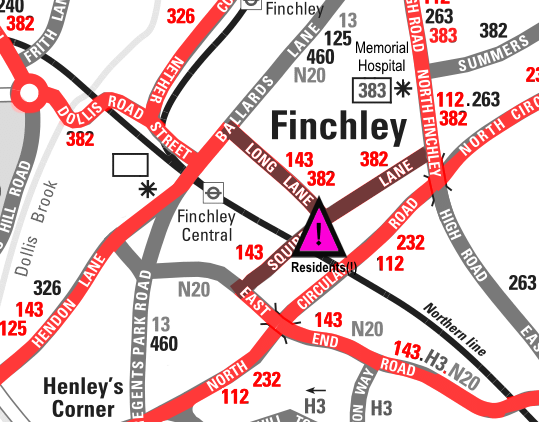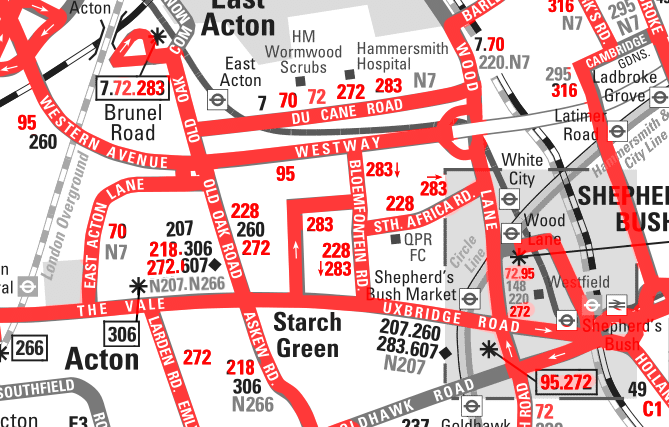 |
| London's debatably deckable single deck bus population. Blood red city roads. |
Even if you aren't well versed in the numbering system you would've noticed how majority of routes in Central London are numbered below 100, with the predecessor being a short mutation of current 366 between Jenkins Lane and Barking, but via Gascoigne Road.
Either way, I explore, mind you with calculations that are invalid from the start due to different conditions (i.e not fair tests), to come up with the answer to questions on the line of: "Is it cost-effective to convert single deck routes to double deck?" With the mindset of "if it can take them [double decks], convert them." For now though...
The likes of the 1-series being dominated but not excluding Central routes of old, take 133 and 113... which is a renumber which we'll get to.
The 2-series served one solid purpose, a solid rule. Single deck routes, some survive with restrictions, 227 (formerly 109) at Shortlands Station, 236, and Reedham Station which had 234 but through natural selection of survival of the strongest link sees 455 now, in future 312 again.
The 3-series mainly confined to Country routes north of the river, 313 and 370.
The 4-series mainly confined to Country routes south of the river, 401, 402, 465. I mention 402 but a shame Arriva pulled it back from Bromley. There is an exception as well, current White Bus' 441 used to reach Herfordshire, even if it was close to London's boundaries.
 |
| The 143 paradox. Squires Lane the anti-Trident. |
 |
| Beckenham. The source of 126, 162, 229, 254. |
- 209 was the previous number of 124
- 214 was the previous number of 113 (Mill Hill Broadway - Hendon Central), no Sunday service
- 229 (previously 609) was Penge to Bromley via Westmoreland Road as per today's N3 with a PVR of 4 single decks (highest at 7 on Saturdays) and one double, renumbered 254 a year later keeping it's one double deck between Beckenham Junction and Bromley before being double decked, gaining the number 126... as you can tell from it's current routeing the 126 barely goes Bromley South. Just switch the last two digits and you have it's successor... the 8.9m E200 allocated 162 (Beckenham Junction - Eltham Station)
 |
| One of the highest concentrations of red. |
For more on the 2-series routes and how I came up with this count, the spreadsheet is here. As for the first question imposed in the title, off the top of my head you only have 124(209), 126/162(229), 216, 227, 236 and 251. I'm not bothered to confirm it after the hassle of researching literally every single deck route and calculating the whole process. Using London Bus Routes by Ian Armstrong as my primary source of course.
Before I end this here, where you'd usually here "like, subscribe" I'm here thinking "if you could share this around, that'd be nice" as I didn't expect working a month on this. The more eyes on it the more awareness. Perhaps a little eye opening.
Okay forget the excuses. So yeah, stay safe.
Fun facts: I just wanted to mention 54 met almost every digit of a x54 route.
No comments:
Post a Comment